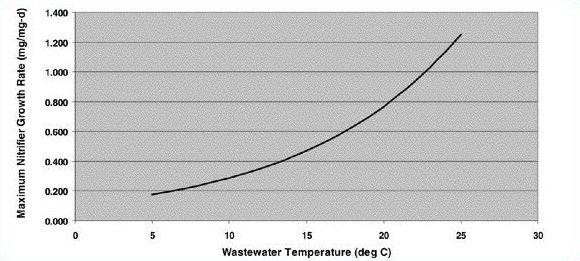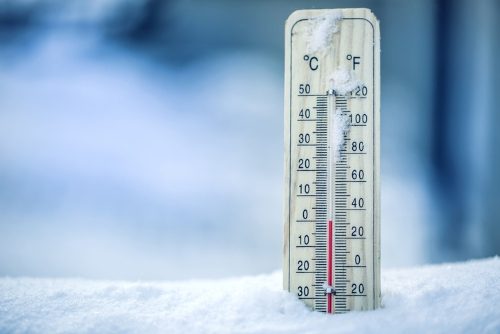As the fall approaches in North Carolina, there are two certainties. The Blue Ridge Parkway will be packed with RV’ers following the changing colors of the leaves and nitrification rates in our wastewater treatment plants will start to slow down. As water temperatures drop below 10 ◦C, the metabolisms of the microorganism responsible for nitrification begin to slow down and, at least for those in a suspended phase, they go nearly dormant around 4 ◦C. A graph of the kinetics for this is shown below.

Influence of temperature on nitrification (McGraw-Hill 2005, 42).
While slow downs in biological processes in the winter are a natural phenomenon, many municipal and industrial facilities must still achieve their nitrification targets. There are several approaches to address this problem. A straightforward but expensive approach is to heat the water. This approach may be viable for small facilities, but quickly becomes impractical as flow rates increase. Another approach is to initiate a new construction project to expand the aeration basins and increase the hydraulic residence time to allow time for the slower nitrification rates to go to completion.
A more practical and cost-effective approach is to install attached growth media, allowing for biofilms of microorganisms to become established. The benefits of the biofilm for cold-weather nitrification are two-fold. First, the biofilm will contain a higher percentage of nitrifying bacteria than the population of microorganisms in the suspended phase. Secondly, even though it is quite thin, the biofilms can retain a small amount of heat, allowing them to continue to nitrify even at a bulk water temperature of 4 ◦C.
The benefit of using a fixed-film approach for cold-weather nitrification can be further and significantly enhanced by using Entex’s Webitat, WavTex, or BioBloc modules. In all three cases, the biofilms are located in a contained environment just above an integrated coarse bubble aeration grid. In addition to providing the air and mixing needed for nitrification, the air, still warm from the blowers, raises the temperature of the biofilms in the module several degrees above the bulk water temperature, which allows nitrification to continue even when the bulk liquid temperature approach 0 ◦C. For example, Entex’s WavTex installation in the Black Hills of South Dakota (https://entexinc.com/powder-house-pass/) maintained an effluent ammonia-nitrogen concentration of less than 1 mg/L all winter long.
If you need some assistance with winter time nitrification, please find our Sale Rep in you territory (https://entexinc.com/find-a-rep/) or email us at info@entexinc.com.
